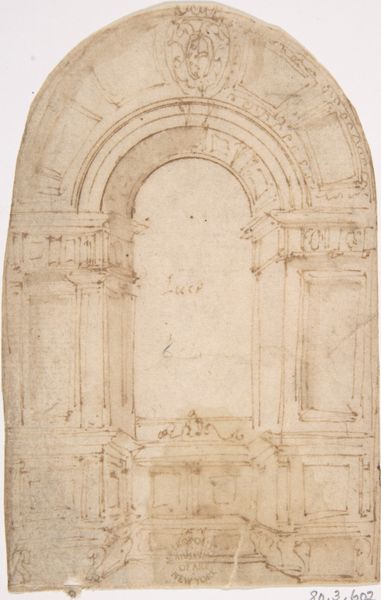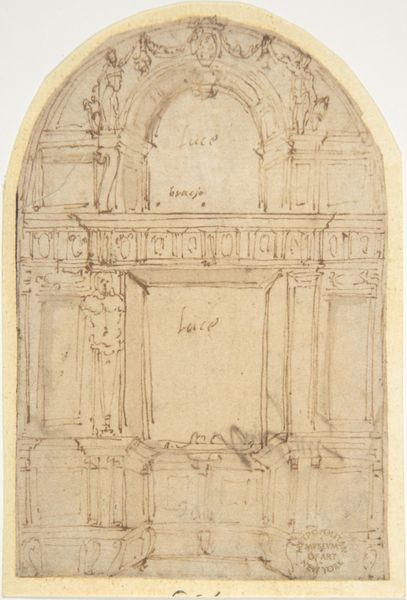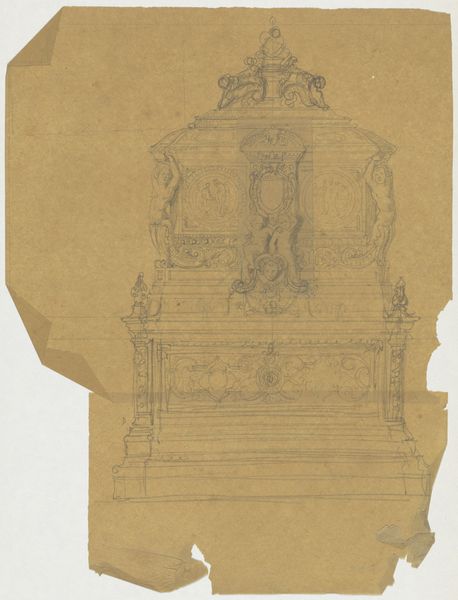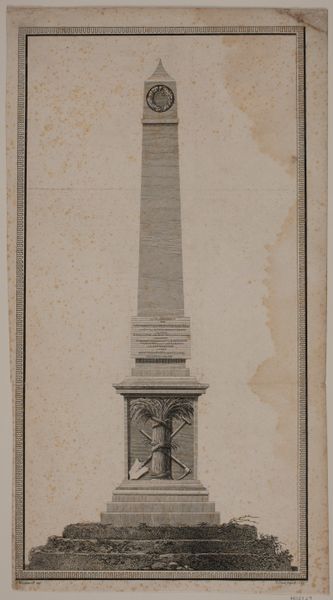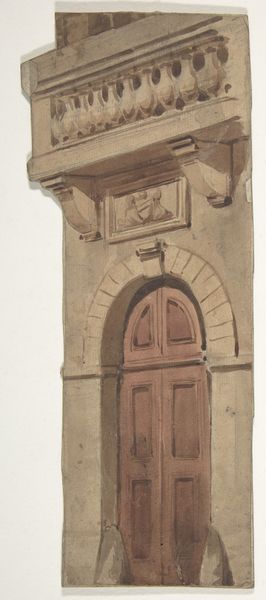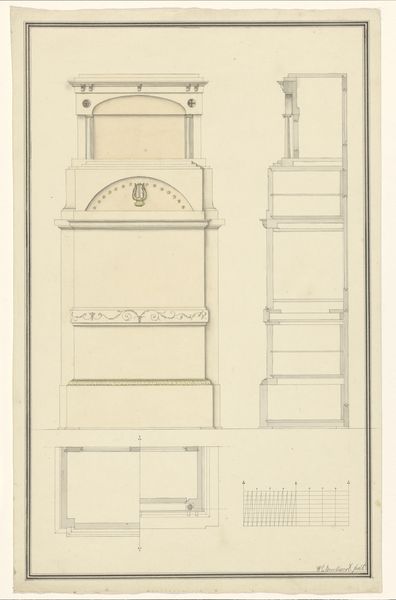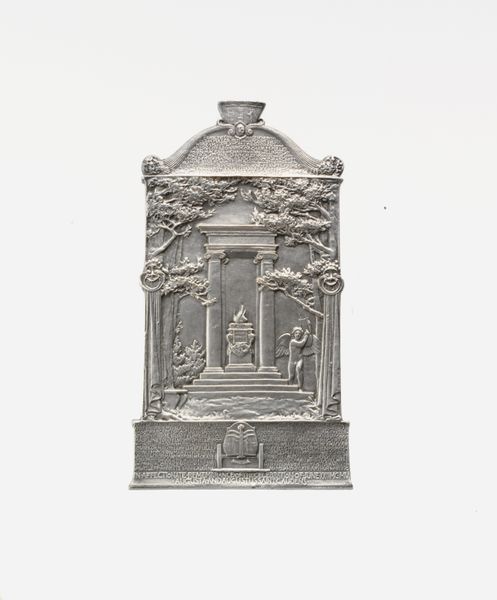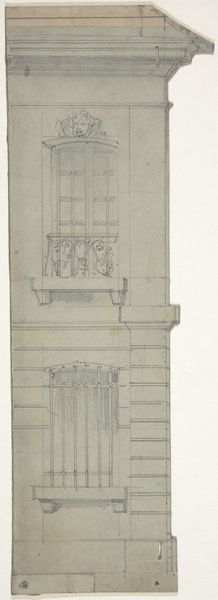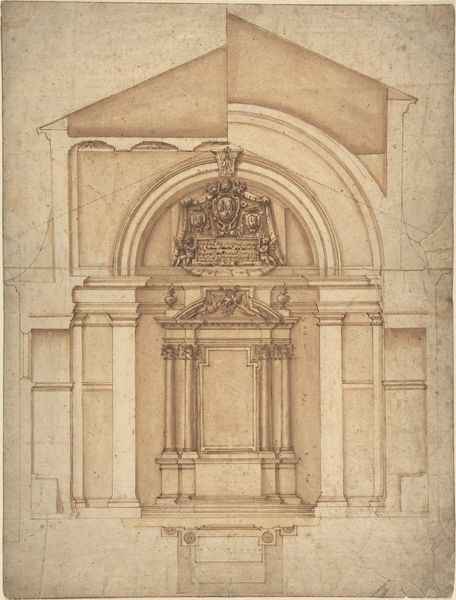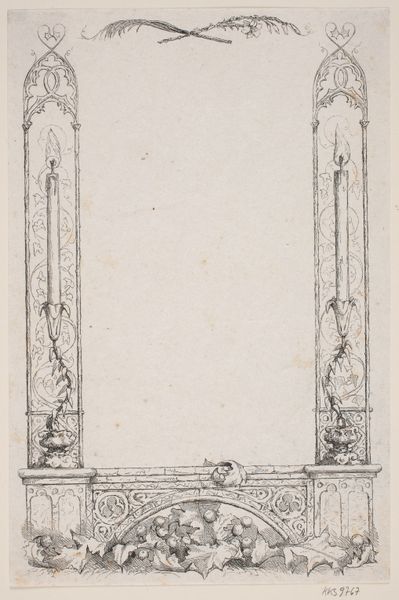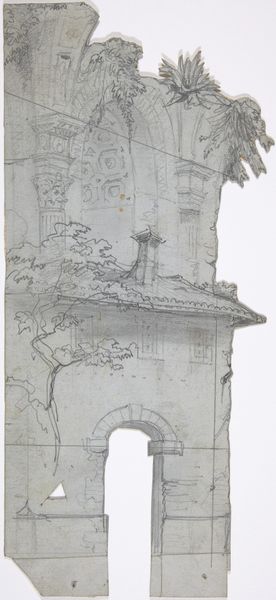
Design for a Stage Set at the Opéra, Paris 1830 - 1890
0:00
0:00
drawing, paper, pencil
#
drawing
#
paper
#
form
#
pencil
#
architectural drawing
#
line
#
academic-art
#
charcoal
Dimensions: Irregular sheet: 11 3/4 x 2 3/16 in. (29.8 x 5.5 cm)
Copyright: Public Domain
Eugène Cicéri designed this stage set for the Paris Opéra in the 19th century, using graphite and possibly charcoal. The Opéra was a cultural touchstone of Parisian society, a place where social hierarchies were both reinforced and sometimes playfully subverted through performance. Consider the theater's role in shaping cultural identity, especially concerning class and gender. Stage designs like this were instrumental in crafting the visual narratives presented to audiences, often reinforcing societal norms. How might the grand architectural elements of this design – the height, the ornamentation – evoke feelings of awe or reverence, influencing the audience's perception of the drama unfolding? These theaters provided a space where societal ideals were performed and consumed, contributing to the collective identity of the audience and solidifying the Opéra's central role in Parisian life. Cicéri's design isn't just a backdrop; it's a participant in the cultural dialogue of its time.
Comments
No comments
Be the first to comment and join the conversation on the ultimate creative platform.

